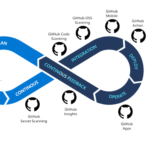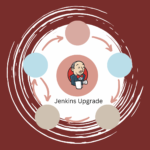Software development world, delivering reliable, secure, and high-quality applications continuously is non-negotiable. Yet, the complexity of modern systems and the speed of deployments can introduce risks that threaten stability and compliance. This is where the concept of a DevOps safety net becomes essential - embedding automated rollbacks, traceability, and quality gates directly into your CI/CD pipelines to create resilient, secure, and auditable delivery workflows.
Understanding the DevOps Safety Net
The “DevOps safety net” refers to a set of integrated practices and mechanisms within Continuous Integration and Continuous Deployment (CI/CD) pipelines that proactively prevent, detect, and mitigate failures or security issues during software delivery. This safety net ensures that software releases are not only fast but also trustworthy and compliant with organizational and regulatory standards.
Key Components of the DevOps Safety Net
- Automated Rollbacks: Automatically reverting to a previous stable version when a deployment causes failures or anomalies.
- Traceability: Maintaining a clear, auditable record linking code changes, tests, deployments, and requirements throughout the software lifecycle.
- Quality Gates: Enforcing predefined quality and security criteria at various pipeline stages to prevent flawed code from progressing.
Why Embed Safety Nets in CI/CD Pipelines?
Embedding these safety nets directly into your pipelines transforms DevOps from a rapid delivery mechanism into a robust delivery system that:
- Reduces downtime and mitigates risks by catching failures early.
- Ensures compliance with security and regulatory requirements.
- Provides transparency and accountability across teams and stakeholders.
- Improves confidence in deployments, enabling faster innovation.
Automated Rollbacks: The First Line of Defense
Deployments can sometimes introduce bugs, performance regressions, or security vulnerabilities that impact users. Automated rollbacks act as a safety valve by reverting the system to the last known good state without manual intervention.
How Automated Rollbacks Work
Rollbacks are triggered based on monitoring key metrics such as error rates, latency, CPU/memory usage, or log anomalies. For example, if fault rates spike post-deployment, the pipeline automatically redeploys the previous stable version using strategies like rolling updates, blue/green deployments, or feature flags to minimize disruption.
Implementing automated rollbacks involves:
- Defining health metrics and thresholds that indicate failure.
- Integrating monitoring and alerting tools with the pipeline.
- Configuring deployment strategies that support quick rollback.
- Maintaining versioned artifacts and metadata for easy redeployment.
Real-World Example
Amazon Web Services (AWS) recommends implementing automatic rollback strategies triggered by alarms on fault rates and latency to enhance system reliability. They suggest waiting periods post-deployment to detect issues under various loads and blocking deployments during high-risk periods, ensuring minimal customer impact[2].
Traceability: Connecting the Dots Across the Pipeline
Traceability in DevOps means having a comprehensive view linking requirements, code changes, tests, and deployments. This visibility is crucial for debugging, compliance, and continuous improvement.
Benefits of Traceability
- Visibility: Stakeholders can see the full lifecycle of a feature or fix.
- Accountability: Clear records of who made changes and why.
- Compliance: Easier audits and adherence to industry standards like ISO or FDA.
- Risk Management: Faster root cause analysis and risk assessment before releases.
Implementing Traceability
To build strong traceability:
- Standardize linking of requirements, tests, and code commits using tools like Jira and Xray.
- Automate reporting by integrating test execution results into the CI/CD pipeline for real-time insights.
- Use analytics to identify trends and optimize testing strategies continuously.
Real-World Example
A software team using Xray Enterprise integrated with Jira can automatically link user stories to test cases and deployment results, providing real-time traceability reports that help ensure release readiness and compliance[3].
Quality Gates: Enforcing Standards Throughout the Pipeline
Quality gates act as checkpoints within the CI/CD pipeline that code must pass before moving forward. These gates verify that code meets predefined quality, security, and compliance criteria.
How Quality Gates Work
Quality gates evaluate metrics such as:
- Code coverage and test results
- Static code analysis and security vulnerabilities
- Build success and performance benchmarks
- Compliance with coding standards and policies
Based on the evaluation, the gate status can be:
- Pass: Code meets criteria and proceeds.
- Warn: Code barely passes; manual review recommended.
- Fail: Code blocked until issues resolved.
Tools and Integration
Static Application Security Testing (SAST) tools like Klocwork or Helix QAC can be integrated as quality gates in GitLab or other CI environments to automatically scan code for security and quality issues before merging[4].
Practical Advice for Implementing Quality Gates
- Define quality criteria aligned with business and security goals.
- Limit gates to critical pipeline stages to avoid delays.
- Use parallel testing and concurrent pipelines to maintain speed.
- Continuously review and adjust gates based on feedback and metrics.
Challenges and Solutions in Building the DevOps Safety Net
Challenges
- Complexity: Integrating multiple tools and processes can be complicated.
- False Positives/Negatives: Overly strict gates or rollback triggers may disrupt valid deployments.
- Traceability Gaps: Lack of integration between tools can hinder full visibility.
- Security Risks: Managing secrets and access controls securely in automated pipelines.
Solutions
- Adopt DevSecOps principles from the start to embed security and compliance in pipelines[1][7].
- Use centralized tools and standardized conventions for traceability to reduce gaps[3][6].
- Configure rollback thresholds carefully and use staged rollouts to minimize disruption[2].
- Implement secrets management solutions and role-based access controls to secure pipeline components[1].
Latest Tools and Technologies Supporting the Safety Net
- CI/CD Platforms: GitLab CI/CD, Jenkins, Azure DevOps, CircleCI.
- Security Tools: Coverity, Spectral, Aqua Security for automated vulnerability scanning[5].
- Traceability Tools: Xray Enterprise integrated with Jira for linking requirements, tests, and deployments[3].
- Rollback & Monitoring: AWS CloudWatch, Prometheus, and custom alerting integrated with deployment pipelines[2].
- Quality Gates: Klocwork, Helix QAC for static code analysis and enforcement[4].
- Secrets Management: HashiCorp Vault, AWS Secrets Manager integrated into pipelines[1].
Future Outlook and Emerging Trends
The future of DevOps safety nets is moving towards even greater automation, integration, and intelligence:
- AI-Powered Monitoring and Rollbacks: Using machine learning to detect anomalies and predict failures more accurately.
- GitOps and Policy as Code: Managing infrastructure and security policies declaratively to reduce drift and errors[7].
- Enhanced Compliance Automation: Automated audits and compliance checks embedded in pipelines.
- End-to-End Observability: Unified dashboards providing real-time insights across code, infrastructure, and user experience.
Conclusion
Embedding a robust DevOps safety net into your CI/CD pipelines is essential to delivering software that is not only fast but also secure, traceable, and high quality. Automated rollbacks minimize downtime, traceability ensures accountability and compliance, and quality gates enforce standards that protect your users and brand. By adopting these practices and leveraging modern tools, organizations can confidently accelerate their software delivery while managing risks effectively.
Start building your DevOps safety net today to transform your pipeline into a resilient, secure, and compliant engine for innovation.
Further Reading & References
- CI/CD Pipeline Automation Implementation Guide - Full Scale
- AWS Guide on Implementing Automatic Rollbacks
- How Traceability Drives DevOps Success - Xray Blog
- What Are Quality Gates? - Perforce
- Top 10 CI/CD Security Tools - Spectral
- Enhancing Azure DevOps Traceability - Microsoft Tech Community
- Future Trends in DevOps - Cogent Info Solutions
If you’re ready to build resilient, secure, and high-quality CI/CD pipelines that act as a safety net for your software delivery, contact us today. Our expert team can help design and implement DevOps pipelines tailored to your business needs.



